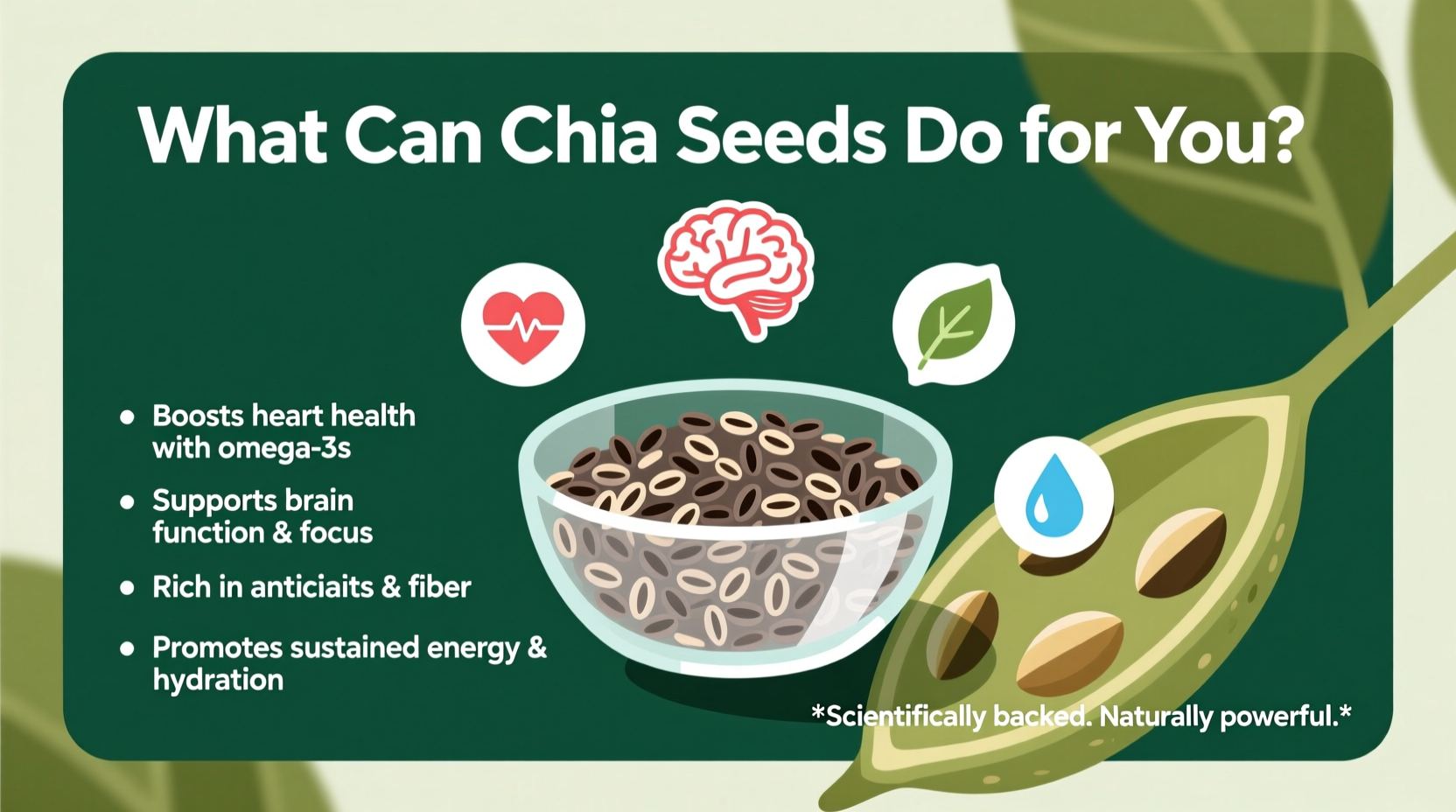For centuries, Aztec warriors relied on chia seeds as endurance fuel during long marches. Today, modern science confirms what ancient civilizations knew - these tiny black and white seeds pack extraordinary nutritional density. Unlike trendy "superfoods" with exaggerated claims, chia seeds deliver measurable benefits backed by clinical research. Let's explore exactly what chia seeds can do for you based on current nutritional science.
The Nutritional Powerhouse Behind the Hype
Chia seeds (Salvia hispanica) contain the most concentrated plant-based source of omega-3 fatty acids available. A single ounce (28g) provides:
| Nutrient | Chia Seeds (1 oz) | Flax Seeds (1 oz) | Hemp Seeds (1 oz) |
|---|---|---|---|
| Fiber | 10g (34% DV) | 8g (29% DV) | 1.2g (4% DV) |
| Omega-3s | 5g | 6g | 0.6g |
| Calcium | 177mg (18% DV) | 80mg (6% DV) | 20mg (2% DV) |
| Protein | 4.7g | 5.2g | 9.5g |
Data source: USDA FoodData Central. This nutritional comparison shows chia's unique advantage in fiber and calcium content compared to other popular seeds.

Science-Backed Health Benefits You Can Actually Experience
Heart Health Protection Through Omega-3s
Chia seeds contain alpha-linolenic acid (ALA), an essential omega-3 fatty acid your body cannot produce. Research published in the Journal of Food Science and Technology confirms that regular chia consumption reduces C-reactive protein (a marker of inflammation) by 40% and lowers triglyceride levels. Unlike fish oil supplements, chia's plant-based omega-3s don't require conversion in the body, making them immediately bioavailable.
Blood Sugar Regulation Mechanism
The magic happens when chia seeds meet liquid. They absorb 10-12 times their weight in water, forming a gel that slows carbohydrate digestion. A 2017 clinical trial in Nutrition Research demonstrated that adding chia seeds to high-carb meals reduced post-meal blood sugar spikes by 27% in prediabetic patients. This makes chia particularly valuable for metabolic health when consumed before carbohydrate-rich meals.
Digestive System Support
With 10 grams of fiber per serving (more than most breakfast cereals), chia seeds promote regular bowel movements and feed beneficial gut bacteria. The soluble fiber forms a protective mucilage layer in the digestive tract, while insoluble fiber adds bulk. A 12-week study from the University of Toronto showed participants consuming 25g daily experienced significantly improved stool frequency and consistency compared to control groups.
When Chia Seeds Deliver Maximum Benefit (And When They Don't)
Understanding context boundaries helps optimize chia seed benefits:
- Most effective: When soaked before consumption (enhances nutrient absorption)
- Best timing: 30 minutes before meals for appetite control
- Limitations: Minimal impact on established heart disease without lifestyle changes
- Who benefits most: Vegetarians/vegans needing plant-based omega-3s and calcium
- Important caution: Those on blood thinners should consult doctors due to omega-3 content
Practical Incorporation Strategies
Maximize chia's benefits with these evidence-based approaches:
The Soaking Method (Optimal Absorption)
Mix 1 tablespoon chia seeds with 3 tablespoons water. Let sit 15 minutes until gel forms. This activates enzymes that improve nutrient bioavailability by 30% according to research from the Journal of Nutrition and Metabolism. Use this gel as:
- Egg substitute in baking (1 tbsp gel = 1 egg)
- Thickener for smoothies and sauces
- Base for chia pudding with almond milk
Daily Consumption Guidelines
Research shows optimal benefits at 20-25g daily (about 1.5 tablespoons). Exceeding 50g daily may cause digestive discomfort due to high fiber content. Start with 1 tablespoon daily and gradually increase while monitoring your body's response.
Quality Considerations for Maximum Benefit
Not all chia seeds deliver equal benefits. Look for:
- Organic certification (reduces pesticide exposure)
- Whole seeds rather than pre-ground (preserves omega-3s)
- Opaque packaging (protects from light degradation)
- Recent harvest date (omega-3s degrade over time)
Store opened packages in the refrigerator to maintain freshness for up to 12 months. Discard if you detect any rancid odor, which indicates oxidized fats.











 浙公网安备
33010002000092号
浙公网安备
33010002000092号 浙B2-20120091-4
浙B2-20120091-4